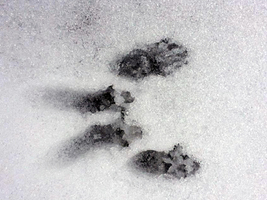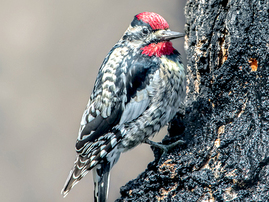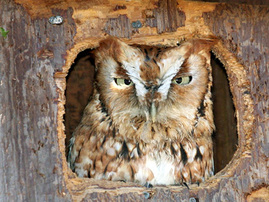|
|
Vol. 22, No. 2 | Winter 2018
|
|
|
Welcome to the winter edition of the HabiChat, our quarterly backyard wildlife habitat newsletter from the Wild Acres program. Winter is usually a time of dormancy for many species. However, quite a few critters are active during this time of year! This issue includes information on one of our winter visitors—the yellow-bellied sapsucker—as well as tips on taking kids out for a winter wildlife safari. It also contains information on winter nest box maintenance tips.
In addition, the University of Maryland Extension's Woodland Stewardship Education has several upcoming events that may be of interest to backyard enthusiasts. Registration for the spring session of The Woods in Your Backyard online course is now open. This self-paced, non-credit course runs 10 weeks from March 7-May 21, 2018. The course will help landowners convert lawn to natural areas and enhance stewardship of existing natural areas.
On Feb. 20, a one-day Farm and Forestry Succession Workshop will occur in Boonsboro. The workshop focuses on assisting landowners how to communicate objectives to their families, and plan for a smooth and secure transition of the farm or forestry lands to future generations.
If there is a particular topic that you would like to see included in a future edition, please don’t hesitate to let us know. Happy Habitats!
Sincerely,
Kerry Wixted
|
|
 Winter Wildlife Safari
In winter, the weather gets colder and the days get shorter. Animals deal with these changes in different ways.
Some animals—like Baltimore orioles—migrate, or travel to other locations. Others—like little brown bats—hibernate, or go through a deep sleep. Others still—like gray squirrels—adapt to the cold by changing their daily activity patterns and layering on fat to insulate their bodies.
|
|
|
 Male yellow-bellied sapsucker; by Steven Kirsting
Yellow-bellied Sapsuckers
Have you ever noticed an almost straight line of holes gracing the trees in your yard or neighborhood? Most people generally identify these holes as belonging to a woodpecker, but only one species in our region feeds in a horizontal line: the yellow-bellied sapsucker.
|
|
 Eastern screen owl; by George Jett
Winter Nest Box Maintenance
Now that nesting season is over, it’s time to take care of your nest boxes.
This is a great time of year to inspect any nest structures that you have and replace any potentially rotted material.
|
|
|
|
|
|
|
|
|
|
|